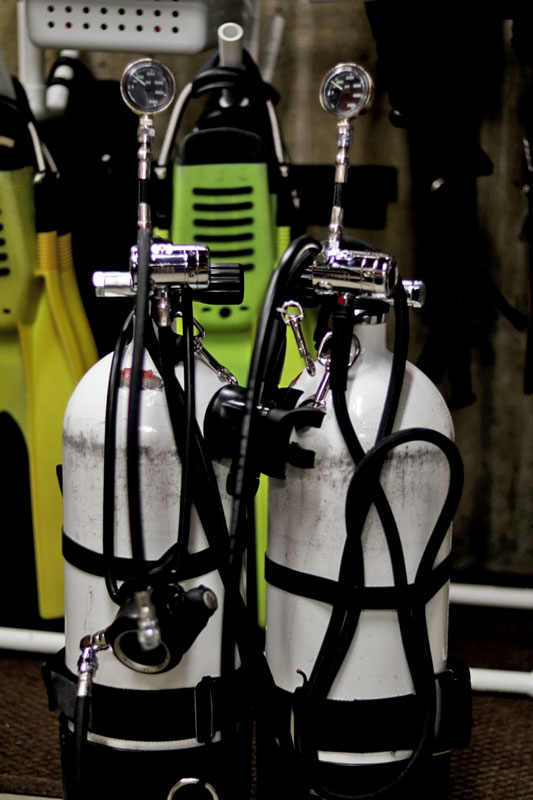Why dive sidemount scuba when there’s nothing wrong with back mount?
The average recreational diver probably doesn’t give much thought to sidemount scuba. Many divers are completely unfamiliar with sidemount. Others know it as a thing tech divers do. There are, however, circumstances where the everyday diver could find sidemount scuba and attractive option.
- Sidemount scuba is an option for divers with back problems or other issues where weight is a concern. In sidemount, your tank(s) are usually clipped on after you enter the water. After the dive, you’ll remove it/them before exiting. As a result, you avoid carrying that heavy weight around in dry land.
- Sidemount scuba gear is less bulky. There are exceptions, but in general, sidemount systems pack flatter and have fewer inflexible parts. There are even ultralight sidemount systems that weight just a few pounds and can fit inside a regulator bag. Try that with your traditional BCD!
- Sidemount offers flexible configuration options. There are purists who will argue there is only one proper and safe sidemount scuba configuration, but those same divers believe a traditional BCD to be unsafe. Most sidemount divers refine their system over many dives. Since sidemount generally offers more customization options than back mounted scuba, many divers give up back mount altogether.
- Sidemount takes the strain off your lower back. A typical recreational dive lasts 45 minutes to an hour. Your complete scuba unit is close to neutrally buoyant, but the weight system nearly always puts pressure around your hips. In sidemount, weight is distributed more toward your shoulders and over your butt. Many divers compare sidemount diving to free diving.
- Sidemount is a good travel option for technical divers. Hardcore technical diving requires helium and oxygen blending, plus doubles for open circuit diving and scrubber material plus O2 and dil bottles for rebreathers. However, there is a lot of diving between 130 and 165-180 feet. Sidemount offers divers with technical training and experience access to deeper dives in locations where it would otherwise be impossible, or at least very costly.
Why dive sidemount? There are many more reasons for taking up sidemount scuba. If you talk to a sidemount purist, he or she will sooner ask, why NOT take up sidemount scuba? But, like everything, there are tradeoffs.
Challenges with sidemount scuba
So, what are the challenges? Despite the benefits, why might divers prefer to stick with their traditional back mount scuba system?
On busy dive boats, I almost always dive with a back-mounted single tank like everyone else. It’s often just easier to go with the flow. Frankly, I don’t want to be “that guy.” Being different for the sake of being different can be a real hassle for the dive boat, and an annoyance to other divers.
Also, it is unlikely the dive operator will be familiar with your equipment setup. If you like having your scuba gear set up for you, that probably won’t happen if your are diving in sidemount.
If you forget a part, or have some kind of failure, you are likely to miss a dive. Most dive boats will have a spare regulator or dive computer on board, but none will have specialty items like chokers or ring bungees. Your regulator hose configuration will be different than everyone else’s, so you’ll need to be completely self-reliant.
If you are traveling alone, chances are you’ll be paired with a buddy that has no idea what you are diving with or how your system works. You’ll need to be extra careful to make sure he or she understands air sharing procedures and other concerns related to sidemount scuba.
Making sure your sidemount experience is a good one
All of these concerns can be managed by planning ahead. Sidemount divers should always communicate with the dive operator before booking a trip. You’ll want to know if they have experience with sidemount divers and address their concerns in advance.
Sidemount can offer advantages over traditional back-mounted scuba. As long as you are courteous and flexible, sidemount scuba might be worth exploring. Chances are your local dive shop can arrange a test dive in the pool.


